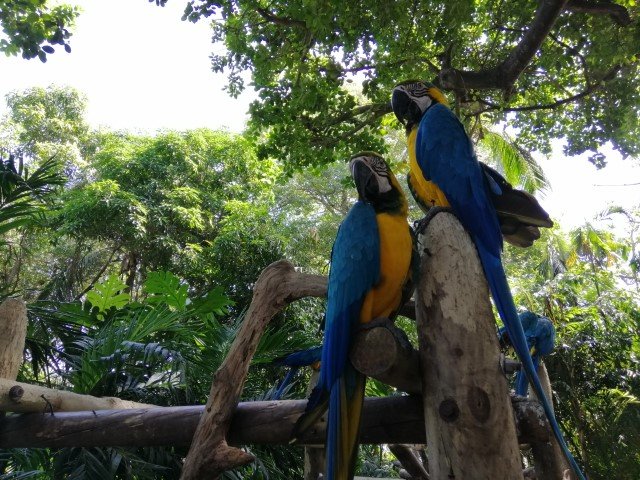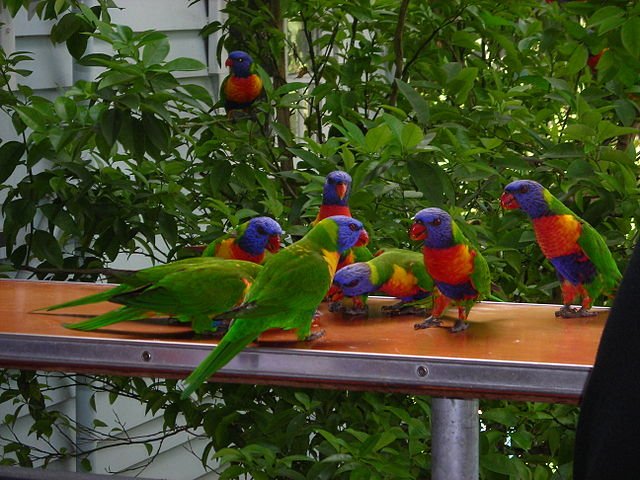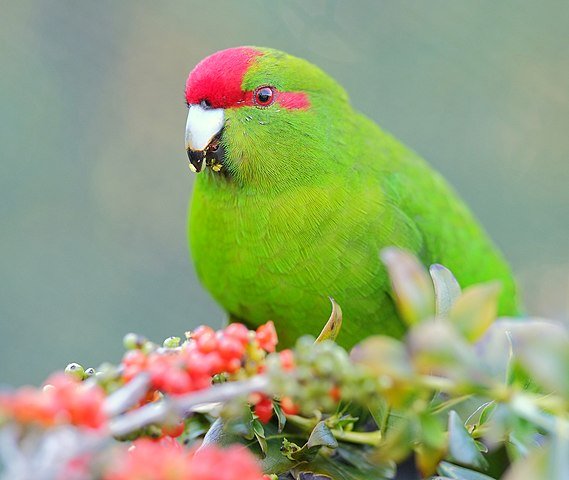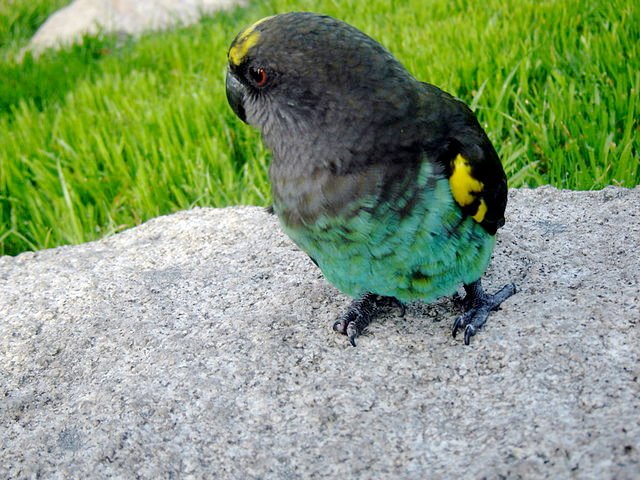After dogs and cats, parrots are the most common pets around the world. And they surely deserve all this love and affection, for they are mesmerizing, entertaining, playful, and loyal companions. But many avian lovers still feel skeptical to have parrots as their companions due to their infamous screams. Few of the parrot species’ occasional contact calls are enough to put them off. But not all parrot species are alike. All one has to do is to avoid adopting certain loud parrot species as they seem too loud even for not-so-sensitive ears. Let’s check the top 10 loudest parrots.
- Conures
Size isn’t always the deciding factor for possessing the capability of being loud. And the loudest parrot species is enough proof. With Nanday conure producing as much as 155 decibels of noise, their screeching can cause permanent ear damage. The other species of conure family produce an average of 120 decibels, which can be heard miles away. With a constant screeching of hours, a conure can cause severe headaches and discomfort to people around them. Just like cockatoos, the noise level of each conure species varies; the popular Sun Conure can produce around 120 decibels, and Mitred Conure produce can be around 100 decibels. All of them can beat the noise levels of a rock concert.

- Cockatoo
A bored Cockatoos screech can be ear-deafening. When in the wild, they alert their flock of the probable dangers around. And to make that alarm call audible through the miles of dense vegetation, they mastered these high levels. Moluccan Cockatoos are considered as the loudest among the family, producing an average of 120 decibels and loudest of 135 decibels of noise. The loudness can be judged by looking at the noise level of 140 decibels of a 747Jumbo Jet. And with the quietest cockatoo, Citron-crested Cockatoo, producing around 100 decibels, no cockatoo can be called quiet.
- Amazon Parrots
Another loud parrot on this list is Amazon. Known to be excellent mimics, they are an intelligent species. And they make sure to use their intelligence in producing shrills that can be ear-splitting. Their unusual technique of producing these screeching sounds in frequencies makes them hard-to-tolerate. The Mealy Amazon species are considered as the loudest member of the family by giving outcalls at 124 decibels approximately. The Blue-fronted Amazons and the Yellow-headed ones aren’t much behind in noise production. That said, there are little quieter Amazon species like Orange-winged and Lilac-crowned Amazons ranging under 100 decibels.
- Eclectus
Another loud parrot whose noise can be harsh on the eardrums is Eclectus. They are a popular pet species and stay generally calm throughout the day. A lot of this can be accredited to good training. But their usual vocalizations and morning and evening contact calls are enough to irritate even a parrot lover. Producing around 115 decibels of noise, a few of the species from the genus can seem even a bit louder, especially when bored. Also, a jealous Eclectus takes revenge from his favorite human by constant shrill shrieks. Try ignoring an Eclectus to get an ear-beating.
Always playful and chirpy, Quakers shouldn’t be messed with. Awakening their wrong side results in painful bites and ear-splitting squawks that won’t stop for hours. And getting into the technicalities of these squawks, they are not much behind Eclectus and are well around 113 decibels. Quiet for most of the day, the morning or evening customary contact calls of a Quaker is still hurtful for many. And with neighbors living next door, they aren’t suitable for apartment dwellers.

- Psittacula
The Psittacula family has quite a few species whose routine contact calls and screeches can cause pain to human ears. The Rose-ringed Parakeets, as they are commonly called, are an equivalent of large birds in a medium-sized body. They tend to give out loud calls that can be placed at around 111 decibels on the loudness scale.
- Macaw
The next in line is the large species, Macaw. Many people keep them at the top of the ‘loudest parrot list’ but this claim is far from the truth. They are wrongly blamed for being loudest, probably given their large size. But on a technical level, they tend to produce contact calls around 105-106 decibels. For eg., Hyacinth Macaw can be as loud as 106 decibels with Scarlet Macaw trailing behind at 105 decibels. That happens to be way less than a conure or a quaker. Also, when a conure or quaker starts screaming, there is no ‘stop’ button. The loud sounds turn into noise rather quickly. But with Macaws, it’s only about 20-25 minutes of contact calls every morning and evening.
- Pionus
Known to be an otherwise quiet species, this medium-sized parrot family loves raucous very now and then. And they make sure when they scream, they do it hard enough to get noticed. The unexpectedly-loud calls of a Pionus can’t be termed as ear-deafening but they surely can be a cause of great discomfort at around 96 decibels. That said, a few species from the Pionus family like the Blue-headed Pionus are so quiet that it is a famed apartment-bird.
- Caique
A super active playful parrot, Caique can create quite a noise, especially when bored. A noise at moderate levels might be tolerable but when such noise has a loudness level of around 93 decibels, it surely is painful to the ears. A happy and comical parrot all the time, Caiques can be a pretty mess when they don’t feel happy. A lonely and bored Caique would become an overtly loud one too.
- Lorikeet
These small to medium-sized parrots are one colorful personality. They thrive on entertainment and activity. Lack of it makes the bird feel bored and they screech hard. They also demand a lot of time from their owners to get their bit of attention and if ignored, they resort to screaming. All this screeching and screaming is rather painful if done at around 90 decibels of constant loudness. Though the customary contact calls aren’t that loud for the one who is used to living with the parrots, once the constant screeching starts, these birds won’t stop until you have a headache. Read about Lorikeet types here.
Summing up
Noise ranks at the top of the list of ‘primary behavioral issues’ in pet parrots currently and many parrot behavioral consultants back this claim. And with each passing day, the problem is only aggravating. This results in many parrot owners abandoning their parrots in the wild which in turn gets traumatic for these birds. They feel alien in the wild too. So, before adopting a parrot, it is very important to be aware of the level of noise that particular species can produce. One must go ahead only if he is ready to accept these sensitive birds not only for their entertainment but also for their true personalities.



